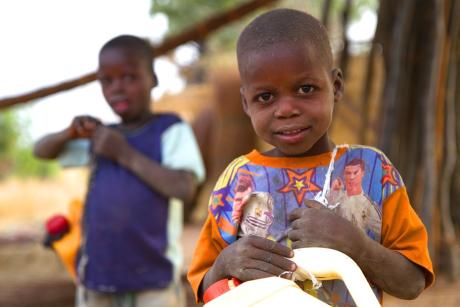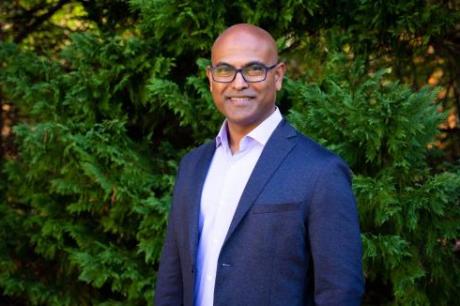
A picture taken of a friend and me at the 2015 Udayan Care Summer Camp. Photo Credit: Diana Harvey
Published July 15, 2015, last updated on October 17, 2017 under Voices of DGHI
By Chaarushi Ahuja
For us, numbers are everything. We are obsessed with our test scores as concrete proof of our academic prowess. The number of “likes” on our social media posts now seem to be crucial markers of our popularity. The hours we spend in the library serve as a testament for how hard we work. Whether we think about it or not, we are indirectly driven by numbers, and this attitude often manifests itself in the ways we perceive research.
And that’s fair. Strong numbers and statistics are necessary to prove a point. Without concrete data, grants aren’t funded, change isn’t orchestrated and projects don’t move forward. But it so often happens that these numbers act as a veil: they hide us from the stories and the personal connections, and we sometimes end up caring more about the numbers and hiding from the experiences of the communities we are in.
When I first started working on the SRT project during this past semester at Duke, I wore this veil, and proudly so. I was extremely invested in numbers and I wanted the research to be perfect. I searched for the right amount of measures, looked at endless rows of data, examined the averages from last year’s team and analyzed for potential gaps in the files. The children we are currently working with, unknown to me at that time, were a string of varying trauma symptom scores, self-concept measures and attachment profiles. I was driven by the goals of obtaining the perfect sample size, getting robust data and continuing the longitudinal study.
In this stage of preparation of keeping up with meetings and organizing the eight week long fieldwork, I temporarily forgot that I was working with people. Real people whose trauma symptom scores represent unimaginable instances and histories. Real people who participate in this study to see changes being implemented at Udayan Care. Real people, who often become mere data points on a giant excel file with their stories hidden behind the veil of numbers.
However, this summer, after coming to Delhi, one of the most important lessons I have learned is that numbers are simply tools for accomplishing a goal, for supporting or disproving claims and hypotheses. But without the personalities and histories behind them, they are empty, void of the memorable experiences that go into bringing the data together. With the research I have conducted so far, I have realized that the numbers that occupied my time at Duke will probably end up being forgettable. Five years down the road, I won’t be thinking about these numbers; I will be thinking about the perspectives that accompany the data we have collected. The tidbits of stories I have heard, the people I have met and the friends I have made in the past eight weeks will forever keep the experience fresh in my mind.
The first day we got to Udayan, we heard statistics of how many children Udayan was working with and how many adults had been in the Udayan Ghar Programme over its two decades. The number of children they have cared for so far is 350. For a number obsessed student like me, that doesn’t seem like much when you put it in context of the 31 million vulnerable children in India. The percentage comes out to be 0.000011%, which, if you are considering having a broad quantitative impact, seems slightly discouraging. But after hearing the coordinator talk more about the Ghar project, the number or the fraction doesn’t do Udayan’s work justice. The children Udayan works with are not only impressive on paper in terms of their numbers, they are genuinely some of the, for the lack of a better word that sums it up—COOLEST—people I have ever met.
Recently, while entering static measures, which include physical measures, academic scores and information about mental health reports, I came across a report card that was especially impressive. The numbers were those of a “topper”—someone ahead of the class, who probably scored well on every test she took, stayed healthy and earned high praise of every teacher. This is all quantitative and you can easily get that out of our excel files.
When I met this individual, though, her height, weight, academic averages or other numbers that define her in our data set were not the characteristics I noticed. I saw her laugh without a care in the world while explaining a hilarious incident that happened a couple days ago. I listened as she enthusiastically describe a dance that she choreographed for a 20-person group and patiently taught me the steps one at a time, looking over and always making sure I was caught up. I still vividly remember the conversation I had with her about the importance of women in excelling in academic areas where females remain underrepresented. I admired her for her genuine kindness, her eloquent thoughts, her intellect and her ability to keep me engrossed in conversation for hours without realizing the passage of time.
This is just one individual, and I have learned more about her than numbers will ever show. But all of the children and adults I have met at Udayan have left a mark on me. When I go back home this week, I won’t take away numbers of “high depression scores” or “low ego-resiliency” as I would have before the summer began. I will think about the girl who taught me her dance moves. I will laugh reminiscing about the time someone bit my hair when a game of Jenga got intense. I will smile when I reread the “Thank You” cards that some ghars made for us. I will replay the performances we saw at summer camp in my head and hum the songs I learned from the kids.
The numerical veil has been lifted. The numbers are still important to me: for providing concrete evidence, for showcasing the work we have done. But when it comes to remembering New Delhi and this summer experience, I won’t be obsessed with numbers; I’ll be obsessed with the memories, the personal connections and the times that our team spent not entering data.


